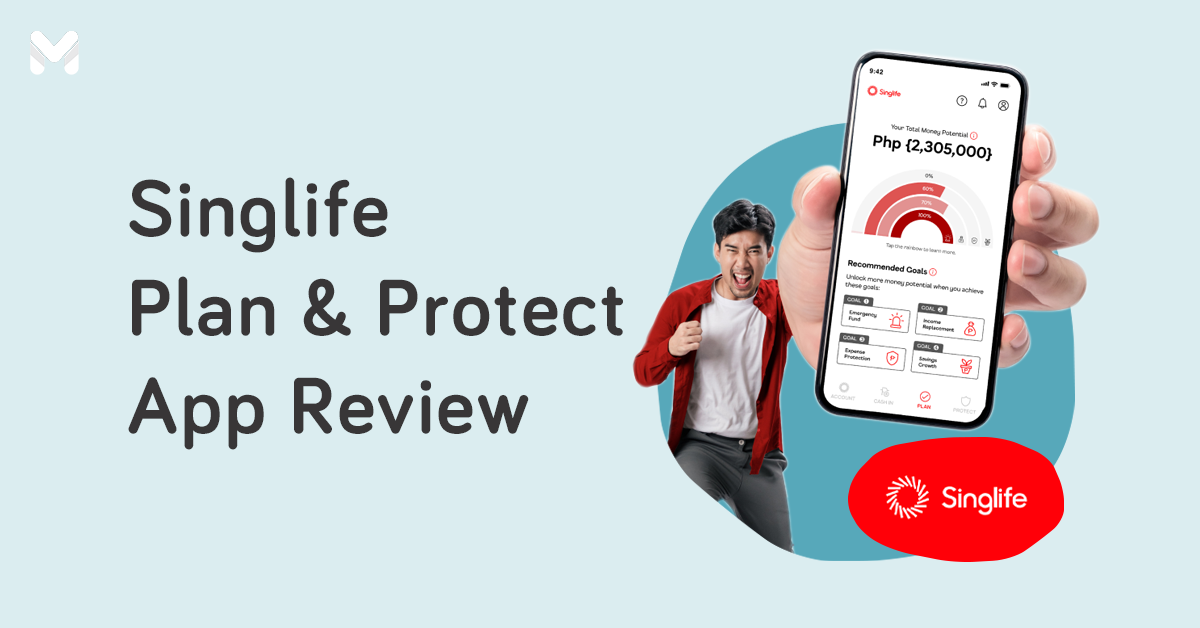Securing a loan can often feel like a labyrinthine process. To determine your creditworthiness, lenders ask for endless requirements and meticulously pore over various aspects of your financial health.
Sometimes, even after tackling that complex maze, you end up with nothing but a firm rejection. It’s a taxing experience full of unknowns.
To better navigate the loan application process, proactively assess the criteria that impact your loan eligibility and terms. A critical metric most lenders assess is the debt-to-income (DTI) ratio.
To significantly boost your odds of approval, you need to understand how to calculate debt-to-income ratio and ultimately optimize it.
What Is Debt-to-Income Ratio?
-Jul-09-2024-03-03-44-1264-AM.png?width=600&height=400&name=Pics%20for%20blog%20-%20600x400%20(27)-Jul-09-2024-03-03-44-1264-AM.png)
The debt-to-income (DTI) ratio is a key financial metric that provides insight into how well a borrower manages their debt relative to their income. It’s a factor that heavily influences the loan approval process, as lenders use it—along with other factors like credit history and financial capacity—to evaluate a borrower’s ability to repay a loan.
🆚 Front-End Ratio vs. Back-End Ratio
Lenders may look at two types of ratios: front-end and back-end.
- Front-end ratio – Also known as “housing ratio” or “mortgage-to-income ratio,” this refers to the percentage of your gross monthly earnings before tax that are used to pay off your housing costs. It encompasses all payments for settling your loan principal, interest, property taxes, home insurance, association dues, and other housing expenses.[1]
- Back-end ratio – Also known as “debt-to-income ratio,” this refers to the percentage of your gross monthly earnings that cover your other debt obligations, including credit card bills, car loans, and any other revolving credit. It also typically includes housing costs as part of the computation.[2]
Lenders often calculate a borrower’s back-end ratio to see what percentage of their income goes to repaying debt. This information gives the former some insight into the latter’s creditworthiness.
How Debt-to-Income Ratio Affects Loan Approval
Lenders use your DTI ratio to determine your credit risk. It’s a reliable tool to see how well you can manage your existing debt, and if you can handle additional credit obligations.
If you have a higher DTI ratio, lenders will view you as a riskier borrower, as most of your earnings are already allotted for repaying your existing obligations. With limited income to allocate, you’re more likely to miss payments, making you an unideal borrower from a lender’s perspective.
A lower DTI ratio is preferable, as it signals to lenders that you have enough income to cover all your debt. This makes you a less risky and more reliable borrower in their eyes.
Whether you're applying for a mortgage, an auto loan, a personal loan, or any other type of credit, knowing your debt-to-income ratio is important in ensuring your financial readiness.
That said, lenders have different DTI requirements per loan type. If you take out a housing loan with a high DTI ratio, lenders may impose a limit to your maximum loanable amount and loan terms.
This may not be the case if you apply for a personal loan, as lenders typically have a higher allowable maximum DTI for personal loan products than for mortgages. You can find many personal loan options available for high debt-to-income ratios.
❓ Does Your DTI Ratio Affect Your Credit Score?
Your debt-to-income ratio doesn’t directly impact your credit score, as credit bureaus don’t factor income into their calculation. What bureaus assess is your credit utilization, or how much credit you use relative to your credit limit.
Where debt-to-income ratio may impact credit score is in its intersection with credit utilization.
A high DTI ratio often overlaps with a high credit utilization ratio, which can negatively impact your credit score. This is because high debt levels relative to credit limits show a bigger financial risk to lenders. Lowering your credit utilization by paying off your debt can simultaneously reduce your DTI ratio and improve your credit score.
So while your DTI ratio and credit score are not inextricably linked, understanding how to calculate debt-to-income ratio and keeping your credit balances below the limits can help you maintain a strong creditworthiness.
Read more: Credit Report vs Credit Score: Understanding the Difference
🎁 Get a chance to win Prizes Worth up to ₱69,990 with a UnionBank Personal Loan
Promo period: Until April 7, 2025
Make your personal loan even more rewarding! Apply for a UnionBank Personal Loan via Moneymax and earn 1 raffle entry for our latest giveaway. Get a chance to win an iPhone 16 Plus, Dyson Slim V8 Fluffy, Nespresso Lattissima One, or a Fujifilm Instax Mini Evo!
Per DTI Fair Trade Permit No. FTEB 214023. Series of 2025. Terms and conditions apply.
How to Calculate Debt-to-Income Ratio
-Jul-09-2024-03-05-20-8863-AM.png?width=600&height=400&name=Pics%20for%20blog%20-%20600x400%20(28)-Jul-09-2024-03-05-20-8863-AM.png)
Your debt-to-income ratio is a measure of how much of your gross monthly income goes toward paying your monthly debts. You can easily calculate it if you already know the variables that factor into its computation—i.e., your estimated debt and income.
To get an accurate answer, follow the steps below:
Step 1: Compute Your Total Monthly Debt
To calculate your debt-to-income (DTI) ratio, total your regular monthly payments for expenses that could appear in your credit report.
These bills may include any of the following:
- Mortgage
- Home equity loan payment
- Monthly rent
- Auto loan payment
- Personal loan payments
- Minimum monthly credit card payment
- Other payments related to your debt
Apart from personal debts, include other debts related to your joint accounts or co-signed loans.
Make sure to exclude irrelevant financial obligations in your computation. While expenses like groceries and utilities may take a significant part of your monthly bills, they’re not relevant in the computation of your debt-to-income ratio. Lenders won’t take these into consideration when determining your creditworthiness.
Step 2: Compute Your Total Monthly Income
Once you have the number for your total monthly debt, the next step is to compute your monthly gross income.
Include any or all of the following, if applicable:
- Salary from full-time work
- Part-time wages
- Income from freelance work or side gigs (must be properly documented)
- Rental property income
Step 3: Divide Your Total Monthly Debt by Your Gross Monthly Income
Now that you know how much debt you have and how much of your income goes toward paying it, use the following debt-to-income ratio formula to assess your financial health:
DTI Ratio (%) = Monthly Debt Payments ÷ Gross Monthly Income x 100
Alternatively, you can also use an online debt-to-income ratio calculator[3] to get more accurate results faster.
🔢 Sample DTI Ratio Computation
Below is an illustrative example of how to calculate debt-to-income ratio:
If your monthly debt payments comprise the following, for a total of ₱40,000:
- Mortgage – ₱20,000
- Auto loan payment – ₱15,000
- Personal loan payments – ₱2,000
- Minimum monthly credit card payment – ₱3,000
And your monthly income includes the following, for a total of ₱95,000:
- Salary from full-time work – ₱70,000
- Income from freelance work or side gigs – ₱10,000
- Rental property income – ₱15,000
Then your debt-to-income ratio computation should look like this:
DTI Ratio = 40,000 ÷ 95,000 x 100 = 42%
Step 4: Analyze the Results
The result of your computation in step 3, expressed in percentage, is your debt-to-income ratio. The higher it is, the more risk you present to lenders. You want a lower DTI ratio to increase your odds of loan approval.
Before proceeding with your application, check each lender's specific DTI requirements. As mentioned, they vary by loan type. For instance, the required debt-to-income ratio for mortgage applications often differs from the debt-to-income ratio for car loan applications.
If you meet the threshold, go ahead and apply. If not, re-evaluate your finances to improve your DTI ratio before moving forward with your application.
🛍️ Fund Big Purchases, Celebrations, and Milestones with an #UNOnow Loan
Buying gadgets, tools, and equipment for work or business? Gearing up for life milestones such as a wedding or a baby? Looking for ways to fund your child's tuition fees?
If you want both convenience and high loan amounts, check out what UNO Digital Bank has to offer. With an #UNOnow Loan, you can borrow funds starting at ₱10,000 up to ₱500,000 with a monthly interest rate of 2%. You can pay it back in six, 12, 18, 24, or 36 monthly installments.
Apply for an UNONow Loan via Moneymax now!
How to Interpret Your DTI Ratio
What is a good debt-to-income ratio?[4] Is there a specific number you should aim for? Below are some of the common implications of your DTI ratio:
- DTI ratio is 36% or less – This is the ideal debt-to-income ratio, as it indicates manageable debt relative to your income. However, depending on factors like your credit score, assets, savings, etc., some lenders may accept higher ratios. If you want better odds, aim for this range to get easier access to new credit.
- DTI ratio is 37% to 42% – This range is generally acceptable, although it may raise concern for some lenders. If you can’t afford to take chances, consider reducing your debt even further to get the ideal DTI ratio.
- DTI ratio is 43% to 50% – A DTI nearing 50% is considered unideal, as it means that almost half of your income is already committed. This can make it difficult to pay off any additional debt, so lenders will most likely decline your application if your DTI ratio falls within this range.
- DTI ratio is over 50% – This drastically limits your borrowing options. No decent lender will approve your application with a DTI ratio of more than 50%. Be wary of any lender who would do so, as they could be practicing predatory lending. Even if a lender is legitimate, think twice before pushing through with your application, as this DTI ratio is an indication of bigger issues threatening your financial health.
How to Lower Your Debt-to-Income Ratio
-Jul-09-2024-03-06-32-4415-AM.png?width=600&height=400&name=Pics%20for%20blog%20-%20600x400%20(29)-Jul-09-2024-03-06-32-4415-AM.png)
Lowering your debt-to-income ratio not only improves your eligibility for obtaining a loan but also helps you get a more favorable interest rate. To better manage your DTI ratio, follow the tips below:
- Track your spending - List down all your expenses, no matter how negligible. Include groceries, gas, utilities, memberships, and the like. Allocate a realistic budget for each one. It’s okay to overestimate rather than underestimate your expenses. This is so you can end up with more savings, which you can use toward paying down your debt.
- Map out how to manage your debt - Create a plan to pay your debt. There are effective methods you can use, the two most popular of which are the snowball and avalanche methods. In the snowball method, you prioritize paying down your smaller debts while settling only the minimum amount on your other debts. The avalanche method is the opposite, as it involves paying down debts with higher interest rates before moving on to other debts with lower rates. Decide which one works in your situation.
- Consolidate your debt - If your debts are no longer manageable, you can consolidate them into one account with a lower interest rate. Doing so will reduce your monthly payments and lower your debt-to-income ratio. Alternatively, you can negotiate a longer repayment term with your lender to reduce your monthly dues. The only downside is you’ll end up paying more interest in the long run.
- Avoid taking on additional debt - Taking on more debt while paying off existing debt is one of the most important money mistakes to avoid. Stop using your credit card for purchases you can’t afford and forgo taking out new loans to cover random expenses. If you’re serious about improving your financial health, you shouldn’t engage in activities that will drive up your DTI ratio.
- Reduce unnecessary expenses - By cutting back on non-essential purchases, you can free up more funds to pay off your debt. The money you save may not seem like a substantial sum, but every penny counts in effective debt management.
- Increase your income - The fastest and most effective way to manage your debt is to increase your income. Whether you're getting promoted at work for higher pay, starting a side hustle, monetizing your hobbies, selling products online, or doing favors like babysitting or dog walking, adding to your income streams can leave you with more money for debt repayment.
- Pay off your debt - The tips above are all for nothing if you don’t actually use your money to pay your debt. Make sure you’re not missing any payments or incurring late fees. Also, as your income grows and your savings increase, allocate a bigger chunk of your money toward debt management. If you prioritize that, your DTI ratio will reach a healthy level in no time, allowing you to confidently apply for and access new credit.
Final Thoughts
Learning how to calculate debt-to-income ratio and working actively to optimize it can help your loan application get approved faster. Convince lenders you’re a reliable borrower who can manage new credit obligations.
As you prepare for your loan application, make sure you have a good DTI ratio. Doing so will not only enable you to improve your loan approval prospects but also enhance your financial health.
For more smart money management tips and guides on how to protect your money, check out the Moneymax blog.
Sources:
- [1] Front-End Debt-to-Income Ratio: Definition and Calculation (Investopedia, 2021)
- [2] Back-End Ratio: Definition, Calculation Formula, Vs. Front End (Investopedia, 2023)
- [3] Debt-to-Income Ratio Calculator (Bankrate)
- [4] What Constitutes a Good Debt-to-Income Ratio? (Investopedia, 2023)







_1200x350.png?width=751&height=219&name=UB_PL_Generic_2_(Jan_2025)_1200x350.png)
_1200x350.png?width=734&height=214&name=UB_CC_Win_Together_Referral_Raffle_Main_KV_(Feb_2025)_1200x350.png)
_1200x350.png?width=734&height=214&name=UNOBank_Loan_Generic_Ad_(Apr_2024)_1200x350.png)



